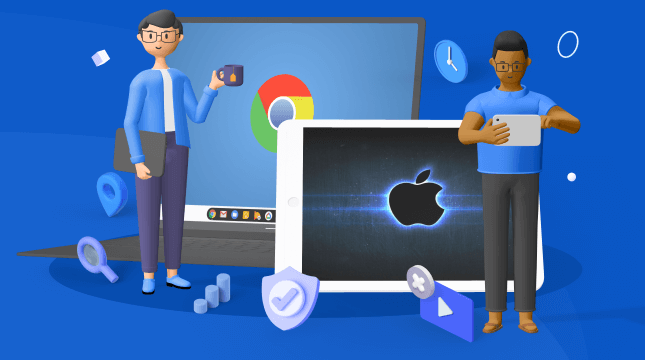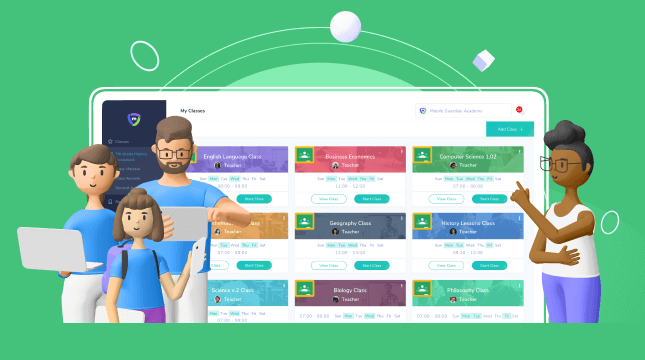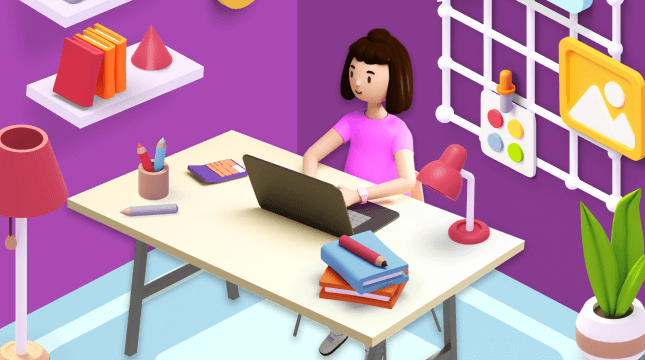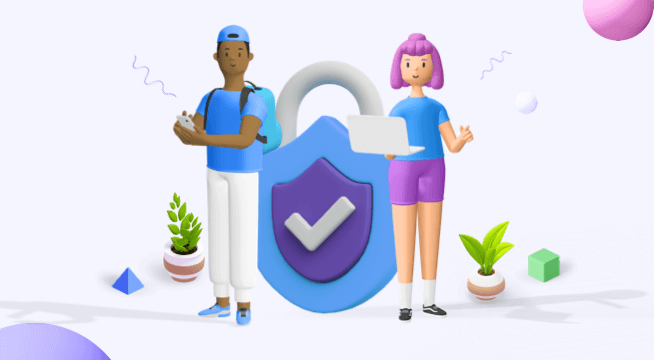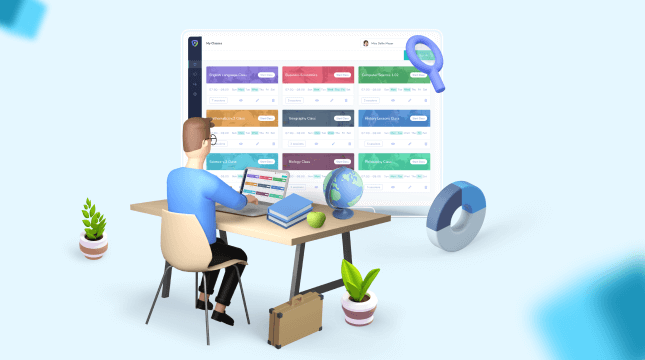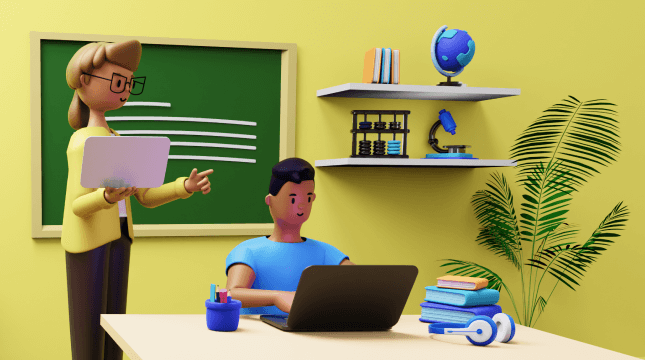In the wake of the pandemic, schools around the world have had to face the rise of the challenges of the virtual classroom. This sudden arrival has not only amplified existing digital challenges but presented a host of new challenges to school management, educators, parents and students alike.
Below are a few pressing challenges facing schools, as well as some practical and technological solutions to help overcome them.
Some of these solutions have been implemented by teachers to help provide students with the best possible opportunity to learn, and overcome the challenges of the virtual classroom.
1. Investing in the right technology
Schools are under considerable pressure to swiftly invest in educational technology to support virtual learning. However, many are failing to consider whether the tech they are evaluating is the right fit for their particular needs. For technology to be effective, it must be evaluated against clear, pedagogical outcomes. Schools who take the time to evaluate will avoid wasteful purchases that add little value to their students’ learning journeys. Request a trial period, or proof of concept when evaluating educational software to give you experience and time to make the right decision. Not only should the tool be relevant for distance learning, but also within a regular classroom environment.
Find out more about investing in the right technology.
2. Teachers feel unsupported
Technology can feel intimidating and at times overwhelming to educators, to the point where it may even be rendered ineffective. Only 5% of teachers believe that they receive training and support with edtech in their schools. Structured training will help teachers feel confident using technology. Some schools organise regular support groups for teachers where they share tips and advice on blended learning. If your school does not have such a community, the #edutwitter community is a free and supportive network for teachers when it comes to technology.
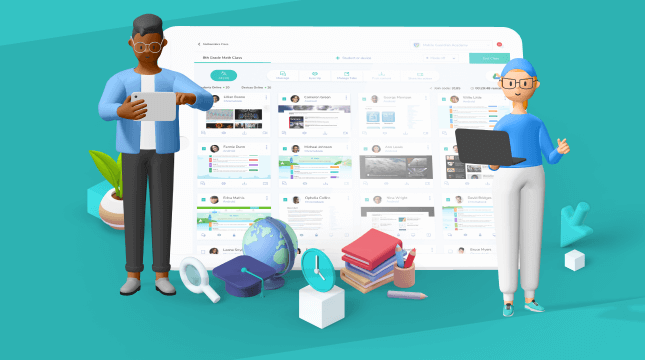 Our article covers a number of ways for schools to support teachers with technology in education.
Our article covers a number of ways for schools to support teachers with technology in education.
3. The need for parent collaboration
Learning from home means that parents have to take a far more hands-on approach with their child’s education. They may need to help print material, ensure their children have the tools they need, as well as a quiet place to learn. Parents need to be supported with even just some small pointers during this time, as many will be working from home themselves. Some Canadian high schools have organised virtual PTA nights designed to help parents cope and encourage them to work alongside teachers to assist the students to learn online.
Let’s set up a collaborative learning environment for all!
4. A learning environment at home
Creating a learning environment at home can have a significant impact on students. A bustling household can be very distracting. Students, like remote working parents, need a quiet space that supports concentration and engagement. Teachers can help by guiding parents on how to create such a space. A learning device like a Chromebook and noise-cancelling headphones will all be very useful to students. A monitor to act as a second screen can be very helpful too should it be an option. It is highly recommended that BYOD schools mandate the mobile device parents purchase, as utilizing a host of different devices presents significant challenges for schools and teachers.
Discover our recommendations on how to create a productive learning environment at home.
5. Ensuring Internet Safety for Students
It is important to safeguard students online, whether that is via a school-owned device or a BYOD. Should a device, such as a Chromebook, need to go home with students – ensuring they are used correctly is very important. IT administrators should look for a quick, easy, and effective way to ensure students are unable to access inappropriate or harmful content online. It is also important to secure devices from online threats.
“In this day and age when internet security in schools is crucial and often very complex Mobile Guardian has provided an effective way to ensure content filtering.”
Develop a solution to ensure internet safety for students.
6. Monitoring & maintenance from the cloud
After investing a large amount in mobile devices, IT administrators will greatly benefit from remotely managing and maintaining devices. It can be quite a process to manually maintain devices and ensure they are kept up-to-date, lesson-ready. Inevitably, teachers will encounter problematic devices during classes, and require the assistance of IT. The ability to remotely assist a teacher is hugely important.
“We have enrolled our devices on Mobile Guardian and deploy and remove apps from the iPads in one convenient place as well as syncing updates automatically.”
Discover a solution for monitoring and maintenance on the cloud.
7. Dealing with distractions
It can be challenging to keep students engaged and focused in a physical classroom and this is amplified further in the virtual setting. Unable to simply walk around their classroom, teachers cannot see if students are engaged in the task at hand or distracted by online games or videos. A classroom management tool is a worthwhile investment and acts as an extra pair of eyes for teachers. Mobile Guardian in the classroom enables teachers to remotely see what students are doing on their screens during lessons, close distracting browser tabs and refocus their students. They can also review the class timeline and see exactly how each student spent their time during the lesson.

“With video conferencing I can see my students, but with Mobile Guardian I can see what they are actually doing on their devices and share my screen at the same time, it’s great.”
Find out more about how you can deal with distractions.
8. Students struggling with isolation
Children need social interaction with their peers and virtual learning means that many may feel isolated at home and cut off from their friends. An innovative New Zealand school has set up virtual meeting rooms during traditional breaktimes where students can join the call and chat to one another whilst eating lunch together. Small gestures like this can go a long way in helping students feel at ease, and not alone during these trying times.

“If adults are struggling with the effects of social distancing, lockdown and isolation, it comes as no surprise that students have also been impacted by the sudden shift to online-only learning.”
Discover how to assist students struggling with isolation.
9. Learning in a post-pandemic world
A new reality demands a new approach and schools will need to ask the right questions when designing their blended learning program. Are 45 minute classes still practical? How can we equip students to shine and overcome the challenges of the virtual classroom? Is a teacher-designed, blended learning model where teachers determine the right balance for both themselves and their students best? What technology do we need to invest in? There are many factors to consider, and forward-thinking schools that take the time to plan for the future and craft a mobile device strategy for their school will be far better equipped to meet it.
Discover more about learning in a post-pandemic world.
Overcoming these Challenges
In part, fostering the right mentality and offering both training and support to teachers to equip them with the right knowledge to bridge the gap that can exist in the virtual classroom is important.
In addition to this, offering the right edtech tools to teachers to assist them to connect and engage with their students is also hugely beneficial. Mobile Guardian, a Google Build Partner, empowers schools to do just that. Through the effective use of mobile devices, teaching students online safely and effectively is much simpler.
Used by schools around the globe, the cloud-based platform offers multi-OS support, classroom management tools, multi-school management, comprehensive web-filtering and linked parental controls.
If you’re interested in finding out how Mobile Guardian may assist you, sign up for a free, 14-day trial here. Test and experiment in your trial environment, and find out how Mobile Guardian can support you to overcome the challenges of the virtual classroom.
Onwards,
Team Mobile Guardian
